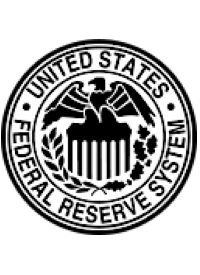
The Federal Reserve announced that it would use a new accounting trick to conceal potential losses on its massive investment portfolio, transferring its liabilities to the U.S. Treasury instead. The new methodology would essentially prevent the central bank’s bankruptcy — on paper, at least — right as the debate on its solvency heats up. But the move is already raising eyebrows among analysts, who say it could severely impact the credibility of both the Fed and the U.S. government.
During the economic crisis, the Fed created trillions of dollars to bail out foreign institutions, buy up lousy mortgage-backed securities, manipulate markets, and more. But enormous potential losses on the central bank’s “investments” could be coming back to haunt it. So, on January 6, in a barely noticed policy change buried in its weekly report, the Fed said it would simply stop treating its losses as a liability against its capital base.
Basically, the change means that when any of the Fed’s regional branches lose money, that loss would be recorded on the Treasury’s books instead of as a hit to the central bank‘s capital position. Then, in theory, the Fed would send more of its future profits to the government to make up for it. The measure would essentially mean that, on paper, the Fed could never show a negative capital position.
If short-term interest rates were to rise quickly, due to either an economic recovery or increasing inflation, the Fed could end up paying out more in interest and dividends to member banks than it was taking in. That could also force the central bank to sell some of its wildly leveraged portfolio — including government bonds and mortgage-backed securities — at a huge loss.
“Could the Fed go broke? The answer to this question was ‘Yes,’ but is now ‘No,'” Raymond Stone, managing director of financial-research firm Stone & McCarthy, told Reuters. “An accounting methodology change at the central bank will allow the Fed to incur losses, even substantial losses, without eroding its capital.”
Of course, the Fed can’t really go bankrupt — all it has to do is create more fiat money. But because by law the central bank must send to the Treasury most of its profits (after operating costs, interest payments, and dividends paid to member-bank stockholders), it isn’t allowed to use those profits to build up “capital” reserves to shield it from losses. So, to get around that, the Fed would simply stop sending profits to the Treasury until its books were in better shape.
“Compared with the prospect of going broke, being accused of accounting shenanigans is a luxury,” wrote Reuters reporter Pedro Nicolaci da Costa. “In that sense, the Fed’s decision to alter its own accounting rules appears prudent. If only businesses and households had the same privilege.”
But, other analysts have pointed out that the accounting gimmick is not entirely without consequences. “Following on the heels of the US $600 bn extension to its quantitative easing program, these kind of moves do not promote confidence in the Fed, but rather cause concern within the markets. We will not make too much of a fuss over this accounting change, but the overall theme of reduced government credibility is strengthened by it,” Bank of America analyst Ralph Axel told the Financial Times.
“In our view, the ongoing decline in credibility ultimately translates into a higher chance of a downgrade in the sovereign credit rating,” he added, noting that “we think markets are likely to become more and more nervous about the outlook, and rates, particularly at the longer maturities, could adjust accordingly.” Axel also pointed out that the controversy over the U.S. government’s AAA credit rating has only been growing, and that recent talk of raising the government-debt ceiling, combined with the Fed’s new accounting rules, “present a further challenge to government credibility, which in turn could contribute to underperformance of the long end of the Treasury curve.”



